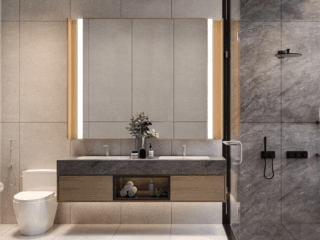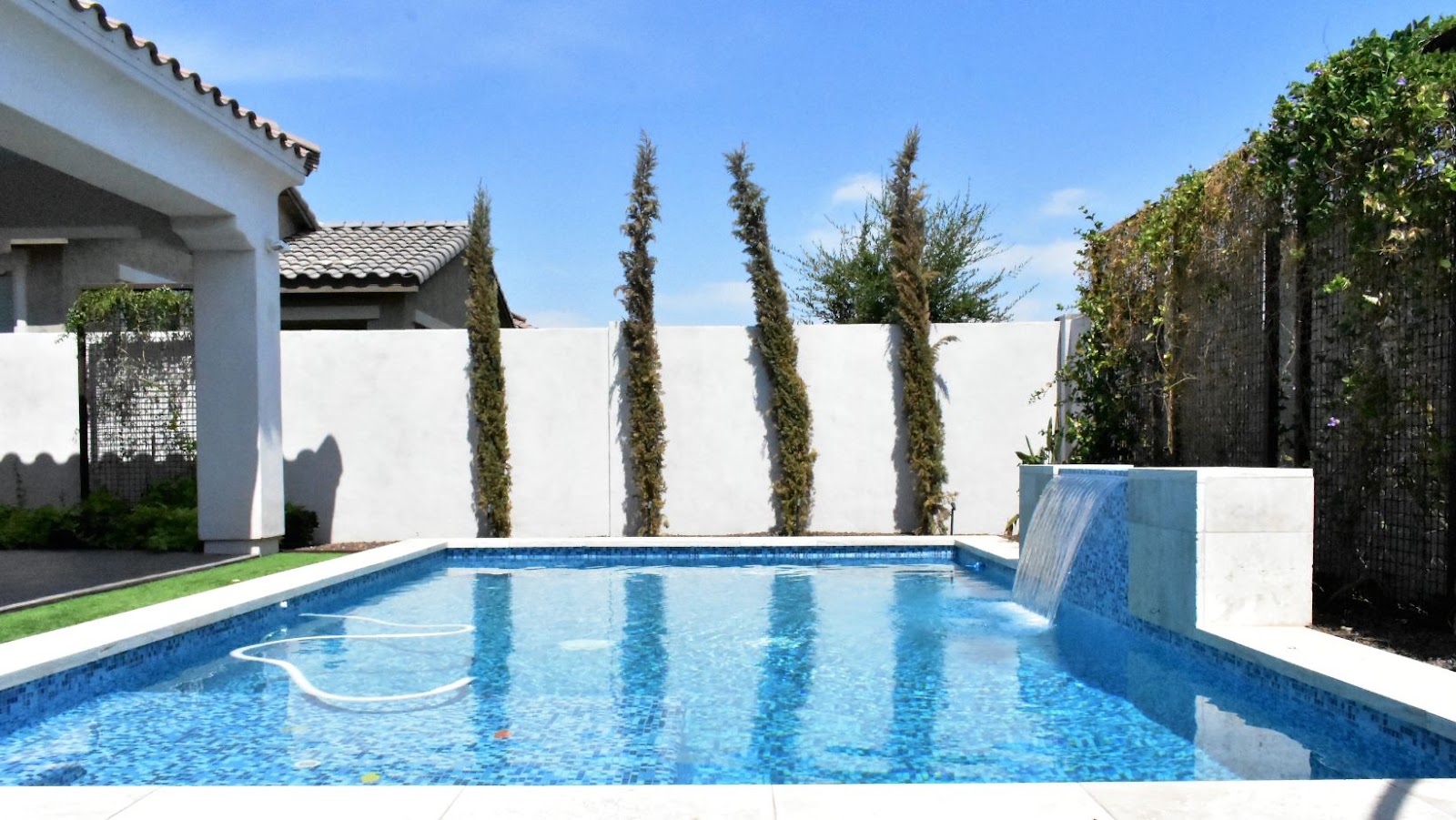
When building a pool in your backyard, it is important to consider the sun and how it affects the various locations you could put your pool. You want to find a spot where the sun will not be in your eyes when you are swimming, or too close to your pool patio. Sunlight can have a major impact on the temperature of your pool, so it is important to consider when deciding on where to put a pool in your backyard.
Where to put a pool in your backyard
When deciding the best location for your new pool in your backyard, it’s important to take into consideration the sun’s path. Knowing where and when the sun shines most in your yard will give you a better idea of where to put your pool for optimal use and enjoyment. Generally speaking, you should place the pool within a space that receives direct sunlight more often than not.
After all, there’s no better feeling than soaking in your pool on a sunny day!
Ideally, many pool owners choose to locate their pools within an area that experiences at least six hours of direct sunlight per day. This ensures that the water temperature remains comfortable and inviting throughout much of the day while making maximum use of natural light and warmth. Sun exposure can also help keep chemical levels balanced, which reduces long-term maintenance costs and helps extend the lifespan of your pool’s components.
By studying the sun’s path throughout different times of year against various locations inside and outside of your yard, you’ll be able to determine which particular spot would be ideal for setting up a pool. Don’t forget to consider nearby trees or structures like terraces or balconies – they could affect how thinly sunlight needs to be spread around the remaining areas, adding an extra degree of planning into where you set-up.
Choose the best spot for sun exposure
One of the most important things to consider when choosing where to put a pool in your backyard is the amount of sun exposure it will get. When building a pool, make sure it is placed in an area that gets at least five or six hours of sunlight each day. This will ensure that your pool stays warm enough during summer and cooler temperatures that prevail in winter. You’ll also want to locate it away from any trees so debris does not accumulate on the surface.
Placing the pool on an elevated piece of land may be wise if you have an area prone to flooding and experience heavy rain showers from time to time. Your landscape should also be taken into account when choosing a location for your pool. Aim for an open space with minimal obstructions that allows you to create an inviting atmosphere where family and guests can relax comfortably and chat without feeling confined by walls or foliage. For more landscaping ideas, visit British Green Thumb.
Next, assess wind patterns around your property as this can play a role in both warmth levels and temperature stability within the pool itself. Consider which way nearby trees or buildings will affect airflow over the structure because a sudden gust could quickly chill swimmers and cause waves or drink spills on decks or around soaking tubs. With these tips in mind, you can easily hone in on the best spot for sun exposure while maintaining privacy, shelter from strong winds, control of lighting, access points, and other amenities like outdoor showers or dining areas near-by.
Analyze Your Yard
When making the decision of the best location for your pool it is important to analyze your backyard. Look at the size and shape of your yard and assess the amount of usable space available. Consider the aspects of drainage, trees, overhanging power lines, level of the yard, and the direction of the sun. These are all factors that will help you narrow down a location for your pool.
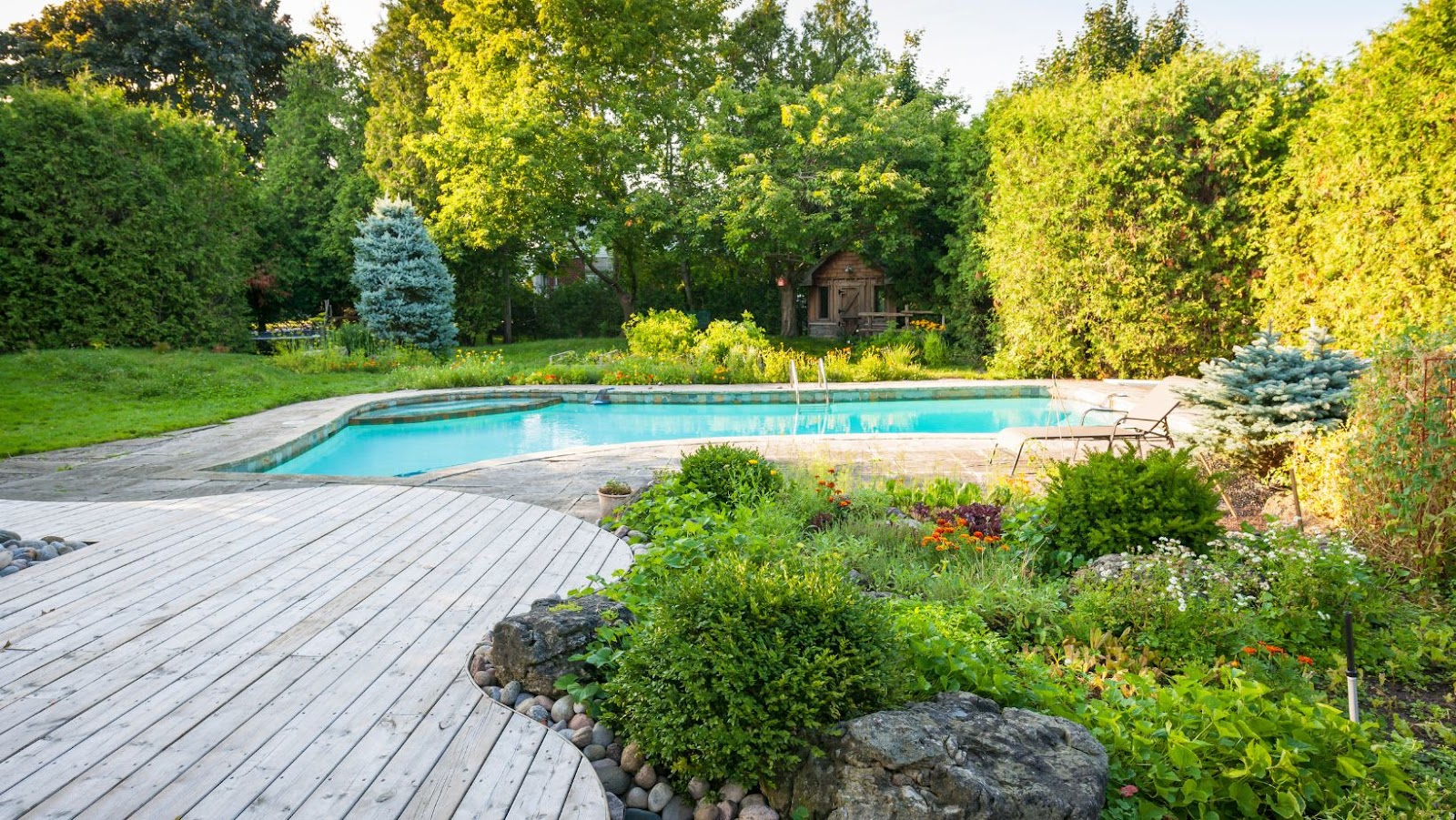
Check for underground pipes and wires
Before you begin designing and planning your pool, it’s important to check for any underground pipes or wires that may be underneath your chosen area. It is also vital that you check your local building codes to see what is permissible in terms of excavation, building height, and other relevant regulations.
You should contact a contractor or certified engineer to identify pipes or wires that may be affected by pool construction. Utility location services are available in most areas, typically at a nominal cost, and help homeowners avoid the costly mistake of accidentally damaging hidden electrical lines or gas lines while digging.
In some areas of the country, a property survey is required before installation. The surveyor will create a plat – a drawing used as an official record – but also to inform contractors and inspectors of landmarks like trees and fences have been converted into legal boundaries after construction is complete. This will help ensure you don’t encroach on property belonging to neighboring landowners. Additionally, surveys are useful for determining:
- How much soil must be moved prior to excavation
- Valuable insights into other land-related decisions you need to make before beginning work on the swimming pool project.
Measure the yard and decide on the pool size
Before you start to plan the perfect spot for your pool in your backyard, be sure to accurately measure the size of your yard and decide what size pool will work in your space. This can help determine how much of the yard it will consume and which area is best suited.
In order to choose a suitable spot, you’ll need to know how large the pool will be and take that into consideration when looking at potential places within your yard. It is also important to consider the current features in the backyard such as trees, buildings, sunlight exposure and other obstacles that may impact where the optimal location for a pool would be. Additionally, it is beneficial to think about how close the pool should be located in relation to buildings such as houses or cabanas if you plan on constructing any of these structures with warm-weather entertaining in mind.
After your measurements have been taken and assessed, it’s helpful to establish what type of construction method you’ll use. Above ground pools are generally easier and quicker to construct than an inground option which requires more excavating work prior to installation. Once you have identified this information ahead of time with accurate measurements, it is a good idea to sketch out a makeshift plan indicating where the ideal placement could be for maximum convenience and visual appeal.
Consider the shape of the pool
When deciding the best place to put a pool in your backyard, it is important to consider the shape of the pool. Most swimming pools come in either oval or round shapes, with rectangular and freeform being other options.
If your yard is small, an oval or round pool will provide you with additional room for entertaining areas or outdoor furniture. Rectangular pools can accommodate one lap lane or multiple lap lanes depending on their shape, depth and size. Freeform swimming pools are much like natural ponds and can be designed as a large feature that meanders through your backyard landscape.
The owner of Precision Landscaping shares advice on pool placement: “When choosing the best location for your swimming pool installation, consider the shape of the pool. Oval or round pools are ideal for smaller yards, allowing extra space for outdoor furniture and entertainment areas. Rectangular pools are great for lap swimming, while freeform pools can create a natural, meandering feature that enhances your backyard landscape.”
Evaluate both form and function when choosing the perfect location for a swimming pool. The particular shape of the area should complement the size and distance of other features in your yard – such as buildings, trees and driveways – so that there is ample space near the water’s edge for seating areas. If there are no trees nearby, consider putting an artificial shade structure over part of the pool or on one side to provide shade from direct sunlight. Ask yourself if you would like to see people sitting around to use it socially which could be elevated using decking rather than grass which offers more stability when wet from pool usages.
For ultimate flexibility in designing your dream yard aquascape, take advantage of 3-D visualization software to explore different placement options before settling on a final location for your new swimming pool!
Choose the Location
Installing a pool in your backyard requires careful consideration and planning to ensure your pool is in the best possible location. You want to find a place that maximizes the views, is easy to access, boasts plenty of sun and shade, and allows for proper circulation.
This section will go over the essential factors to consider when deciding where to put a pool in your backyard:
Consider the view
When determining the best spot for your pool in your backyard, consider the view, accessibility, and available space. You want a location that provides a pleasant, aesthetic backdrop or backdrop to family activities. For example, if you have a large tropical garden, putting your pool near this part of your garden can be attractive and visually appealing. If you prefer the open look and want to take advantage of the natural landscape that surrounds it, positioning your pool at the northernmost area of your yard may provide you with an uninterrupted view.
Accessibility is also an important factor when selecting a location for your pool as you will likely be using it regularly. Look for sites that are conveniently located near patio furniture or an outdoor kitchen for easy access to meals and relaxation. Additionally consider options such as pathways or decks to provide secure access in and out of the water.
Finally, before deciding on a spot, measure out how much space you’ll need for potential features such as luxurious seating areas poolside or even a smaller wading pool if you have children – this will help determine how much room is needed in addition to the size of the actual swimming pool installation itself. Keeping these notes in mind when researching locations can lead to an excellent decision on where to put the new swimming oasis in your backyard!
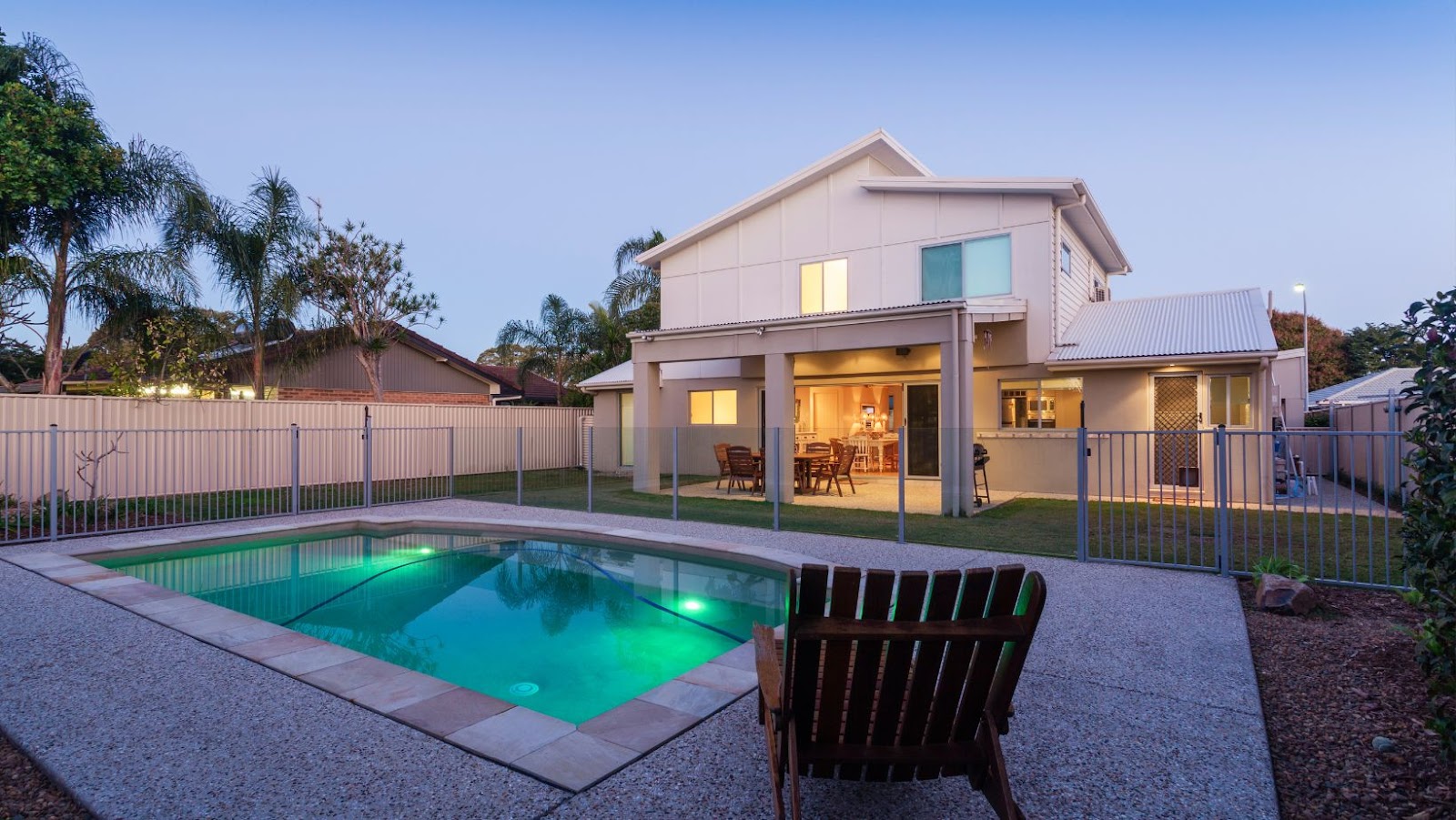
Consider the access
Accessibility is an important consideration when determining where to put a pool in your backyard. You’ll want easy accessibility to a yard area large enough to accommodate it, and preferably one that’s close to utilities like gas, electricity, and water – if you plan on having an outdoor shower or jacuzzi for instance. If you plan on making the pool more accessible by including a deck or paving, then access can be limiting too.
On the other hand, there are certain locations that are scientifically proven to be better when it comes to both pool placement and general backyard design. For example, if you want your pool area to get plenty of sunshine then consider sloping it towards the east or west as opposed to north or south. Furthermore, if you want privacy consider positioning your pool away from any overlooking structures or boundaries such as trees, buildings and fences.
Ideally you should also think of practical uses for the space around the pool while also bearing in mind how much shade cover would be beneficial during peak times of day. If there are existing trees in the area then assess them for their position in relation to its shadow projection. Pay attention to not only the tree position but its height as well since taller trees will cast large shadows onto your yard space; this rule goes for other objects surrounding your yard such as buildings too!
Consider the privacy
When selecting the location for your pool, the most important factor to consider is privacy. When deciding where to put a pool in your backyard, you want to make sure it is not exposed to too much public view. This will ensure that your pool area stays private and can be enjoyed in peace and tranquility.
You’ll also want to consider the size of the area needed for installation, as well as whether or not you’ll need fencing regulations taken into account.
Things like nearby trees, bushes, trellises and even a gazebo can be used to make your swimming area feel more private and secure. Even small changes like these can help provide that extra layer of security that will help keep the area out of public sight.
You may also want to consult local zoning rules regarding building of a pool in a residential area such as yours. It is often overlooked but very important phase in trying to build a house or just adding features like a pool or hot tub. Zoning regulations often stipulate requirements such as:
- height limits on fences
- restrictions on lighting or noise levels near residential properties
so you should check this before going ahead with any plans for construction.
Prepare the Site
If you’re planning to install a pool in your backyard, the first step is to properly prepare the site. This involves deciding on the best location for the pool that meets both your aesthetic and practical preferences.
Location considerations will include:
- The size and shape of the pool.
- The landscaping surrounding it.
- Access to utilities.
- Any local codes and restrictions that apply.
Let’s take a look at these factors in more detail.
Remove any debris
Before you begin constructing your pool, you’ll need to prepare the site. It’s important to take the time and effort to ensure your pool will last for years.
The first step is preparation of the existing area in your backyard. Gently remove any debris or impediments in or around the designated area. This includes leaves, twigs and any larger items such as rocks. Check for any underground devices like sprinkler systems, plumbing lines or electrical wiring that could be disrupted by the installation of your pool. If any utilities are present in the ground, it’s best to have them located and marked so that you know where they are for reference later on if needed.
You may need to level out the land with a shovel if there is not a significant amount of soil already prepped at construction height; otherwise a mechanical tiller can be used if necessary. Ensure that all sod is removed from this area so that your pool has a good foundation below it and won’t move or shift due to inconsistencies in soil level or type when filled with water.
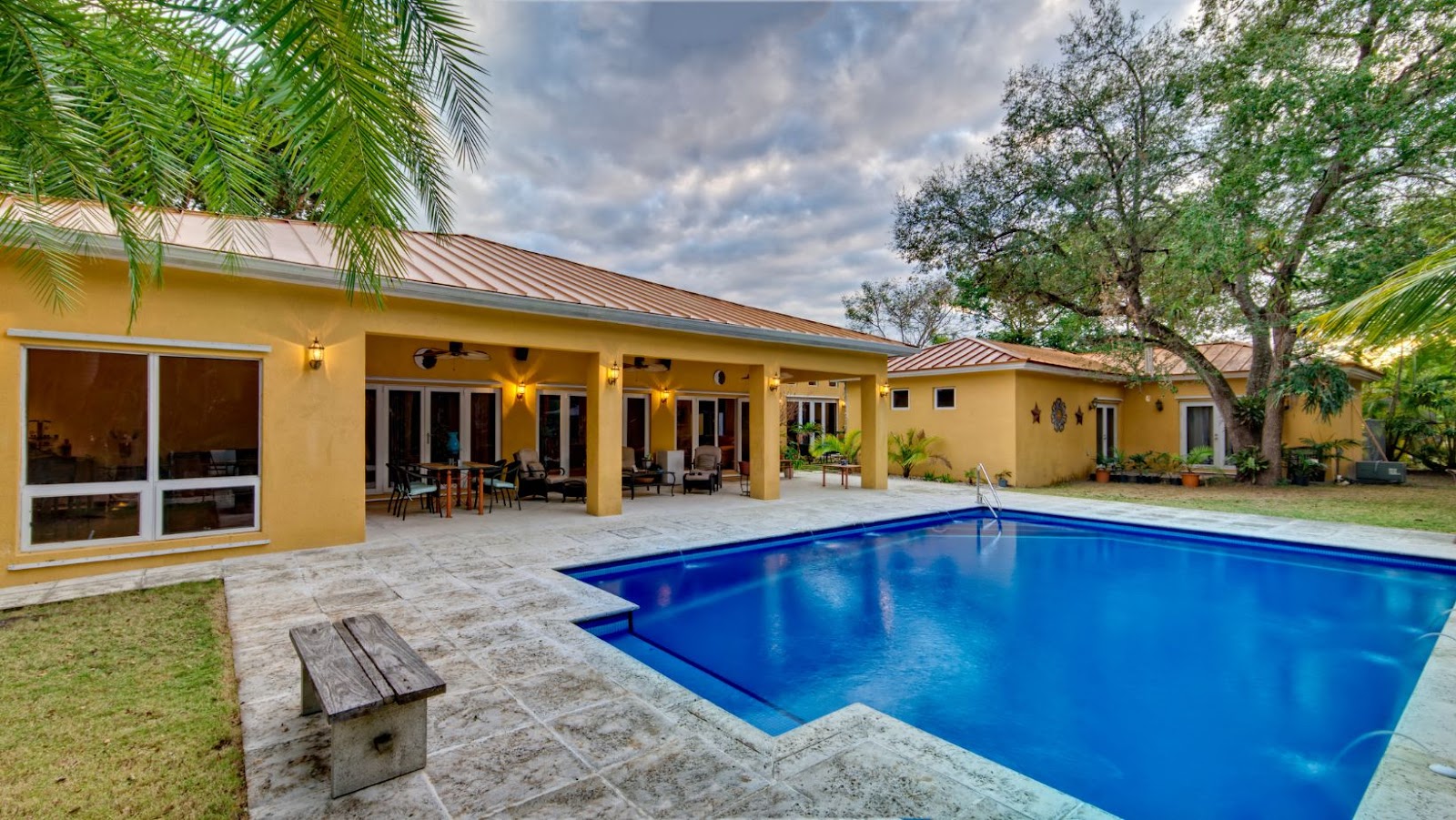
Level the ground
One of the most important steps in installing your pool is leveling the ground where it will be placed. It is essential to ensure that the pool is in a level spot and that the base has a flat and even surface before you begin any other construction processes.
To level your chosen area, you may need to dig out any low spots and fill up high spots with the appropriate materials like sand or gravel. When measuring for a level, use an even two-by-four board for accuracy. Once leveled and secure, you are now ready for the first layer of construction – which usually consists of compactable gravel.
Install a base layer
Before you begin to build a pool in your backyard, make sure that you install a base layer. Installing a base layer is essential for ensuring that the pool remains safe and secure as it is filled with water. A properly installed base layer will provide insulation and protection from the elements. It will also help keep the pool in place, which makes it much easier to maintain.
Base layers are usually composed of several materials, including sand, gravel and compacted aggregate pads. Adding these types of materials will ensure that your pool won’t settle over time or become unstable when full of water. Sand and gravel are usually spread over the area where the pool will be constructed at a minimum depth of six inches to create a level surface before laying down any pad material. An aggregate pad should then be added on top according to manufacturer instructions or local codes prior to pouring concrete footings for the walls or construction of decks and associated amenities such as slides or diving boards.
Creating a proper base layer can make all the difference when building a swimming pool in your backyard – it lays the foundation for ensuring that you have an attractive and well-built space available for family fun for years to come.
Install the Pool
Installing a pool in your backyard is a great way to add value to your home. Knowing where to put a pool in your backyard is a crucial factor in getting the most enjoyment out of it. It is important to consider the size of the pool, the landscaping, the privacy, and the appeal for both you and your guests.
Let’s look at some of the best locations to consider when installing a pool in your backyard:
Place the pool in the chosen location
Before you install the pool in your backyard, there are a few things you’ll need to consider:
- Where will the pool go, so that it is out of direct sunlight?
- Will it fit comfortably in the yard and are there any obstacles restricting its size or shape?
You should place your pool as close as possible to your house, and make sure it is away from trees with long branches that could interfere with its use. Try to position the pool where it will best accentuate the look of your garden.
Consider regulating wind direction when placing your pool by placing walls around it, such as tall shrubs or bushes for protection from gusts of wind. Make sure there is a large area around the pool which gives enough room for lounging chairs and other activities.
Also think about visibility when placing your pool – where can you still be part of an untrained eye from neighbors? How about views? Consider that you may want to spoil yourself with a view of nature or open space seen through the other side of a window near the edge of the pool.
Finally, assess whether water runoff from surrounding areas will affect pool locations before deciding where to place it. You may want an efficient drainage system in place if runoff threatens its stability and integrity even after positioning in your chosen location.
Fill the pool with water
After you have determined the best location for your pool in your backyard, it’s time to fill it with water. You can use a garden hose connected to a spigot with the correct adapter for the threads on the end of the hose, or use a well-pump attached to an underground piping system from your well that leads directly to your pool. Make sure you are using safe, clean water, either from a city water source or from a private well.
Use a pool skimmer to skim leaves, twigs and other debris off of the surface while filling so they don’t get trapped in your filtration system or clog up pumps and filters. Generally, it takes between 6 and 12 hours for most swimming pools to fill depending on its size and how much water pressure you are able to provide. Once full, check all accessible fittings around the pool walls for leaks. If no leaks occur then it is ready for vacuum testing once chemistry is balanced.
Test the pool’s water chemistry
Once the pool’s excavation is complete, it is time to begin filling the pool with water. Before jumping into the installation of your pool’s equipment, it is important to secure a sample of the water and test its chemistry. Knowing what substances are in your water can help you make adjustments as needed so that your pool will be protected from potential damage and maintain an optimal balance.
The three most important tests for keeping your pool healthy and safe include:
- Chlorine Testing: This test ensures correct levels of chlorine are present to keep bacteria, algae and other contaminants from growing in the water.
- pH Testing: This measures how acidic or alkaline the water is. It is important for safe swimming because pH levels that are too low or too high can cause irritation to eyes, skin and respiratory system.
- Total Alkalinity Testing: This will let you know how easily pH levels can change and maintain a range that won’t harm swimmers.
By testing your new pool’s chemistry prior to installation, you can make any necessary changes early on in order to keep your swimming environment safe and enjoyable for years to come!

